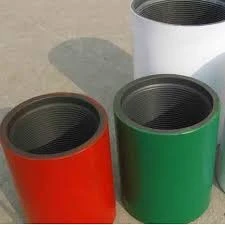- Afrikaans
- Albanian
- Amharic
- Arabic
- Armenian
- Azerbaijani
- Basque
- Belarusian
- Bengali
- Bosnian
- Bulgarian
- Catalan
- Cebuano
- Corsican
- Croatian
- Czech
- Danish
- Dutch
- English
- Esperanto
- Estonian
- Finnish
- French
- Frisian
- Galician
- Georgian
- German
- Greek
- Gujarati
- Haitian Creole
- hausa
- hawaiian
- Hebrew
- Hindi
- Miao
- Hungarian
- Icelandic
- igbo
- Indonesian
- irish
- Italian
- Japanese
- Javanese
- Kannada
- kazakh
- Khmer
- Rwandese
- Korean
- Kurdish
- Kyrgyz
- Lao
- Latin
- Latvian
- Lithuanian
- Luxembourgish
- Macedonian
- Malgashi
- Malay
- Malayalam
- Maltese
- Maori
- Marathi
- Mongolian
- Myanmar
- Nepali
- Norwegian
- Norwegian
- Occitan
- Pashto
- Persian
- Polish
- Portuguese
- Punjabi
- Romanian
- Russian
- Samoan
- Scottish Gaelic
- Serbian
- Sesotho
- Shona
- Sindhi
- Sinhala
- Slovak
- Slovenian
- Somali
- Spanish
- Sundanese
- Swahili
- Swedish
- Tagalog
- Tajik
- Tamil
- Tatar
- Telugu
- Thai
- Turkish
- Turkmen
- Ukrainian
- Urdu
- Uighur
- Uzbek
- Vietnamese
- Welsh
- Bantu
- Yiddish
- Yoruba
- Zulu
Understanding Casing Pup Joints in Oil and Gas Operations and Their Applications
Understanding Casing Pup Joints in Oil and Gas Industry
Casing pup joints play a crucial role in the oil and gas industry, serving as essential components that contribute to the overall efficiency and effectiveness of drilling operations. These short lengths of pipe are designed to adjust the height of the casing string, allowing for optimal well construction and integrity. To truly appreciate the significance of casing pup joints, it is important to understand their design, applications, and benefits.
Understanding Casing Pup Joints in Oil and Gas Industry
One of the primary applications of casing pup joints is in the completion of oil and gas wells. When drilling operations encounter variations due to changes in geological formations, casing pup joints are used to ensure that the casing string is placed at the right depth. This is essential for maintaining the well's structural integrity and preventing issues such as casing collapse or formation collapse, which can lead to costly repairs or even complete well failures.
casing pup joint

Moreover, casing pup joints can be used in both vertical and horizontal drilling applications. In scenarios where horizontal drilling is utilized, pup joints allow for the precise adjustment of the casing string, ensuring that the wellbore remains stable across various formations. This is particularly important in areas with challenging geological conditions, where the risks of subsidence or other deformation are heightened.
The benefits of incorporating casing pup joints into drilling operations are manifold. First and foremost, they enhance the overall safety of the drilling process. By ensuring that the casing string is adequately supported and sealed, pup joints help to prevent fluid leaks and other hazards that can jeopardize both the operation and the environment. Furthermore, they contribute to increased efficiency, as the ability to customize the length of the casing string means that less time and resources are spent on drilling and completion processes.
Another advantage of using casing pup joints is their cost-effectiveness. By decreasing the need for longer casing sections, operators can reduce material costs and minimize waste. Additionally, quicker and more efficient drilling operations can lead to significant savings on labor and equipment expenses.
In conclusion, casing pup joints are vital components within the oil and gas sector, serving to enhance the structural integrity of wells while providing the necessary flexibility for various drilling conditions. Their role in ensuring safe and efficient operations cannot be overstated. As the demand for energy continues to rise and exploration efforts push deeper into more complex geological formations, the reliance on such specialized tools will only grow. Understanding and utilizing casing pup joints effectively will remain a significant aspect of successful drilling and completion strategies in the harsh environments characteristic of the industry. Thus, the significance of casing pup joints cannot be overlooked, as they are integral to the safety, efficiency, and economy of oil and gas extraction processes.
-
Tubing Pup Joints: Essential Components for Oil and Gas OperationsNewsJul.10,2025
-
Pup Joints: Essential Components for Reliable Drilling OperationsNewsJul.10,2025
-
Pipe Couplings: Connecting Your World EfficientlyNewsJul.10,2025
-
Mastering Oilfield Operations with Quality Tubing and CasingNewsJul.10,2025
-
High-Quality Casing Couplings for Every NeedNewsJul.10,2025
-
Boost Your Drilling Efficiency with Premium Crossover Tools & Seating NipplesNewsJul.10,2025







